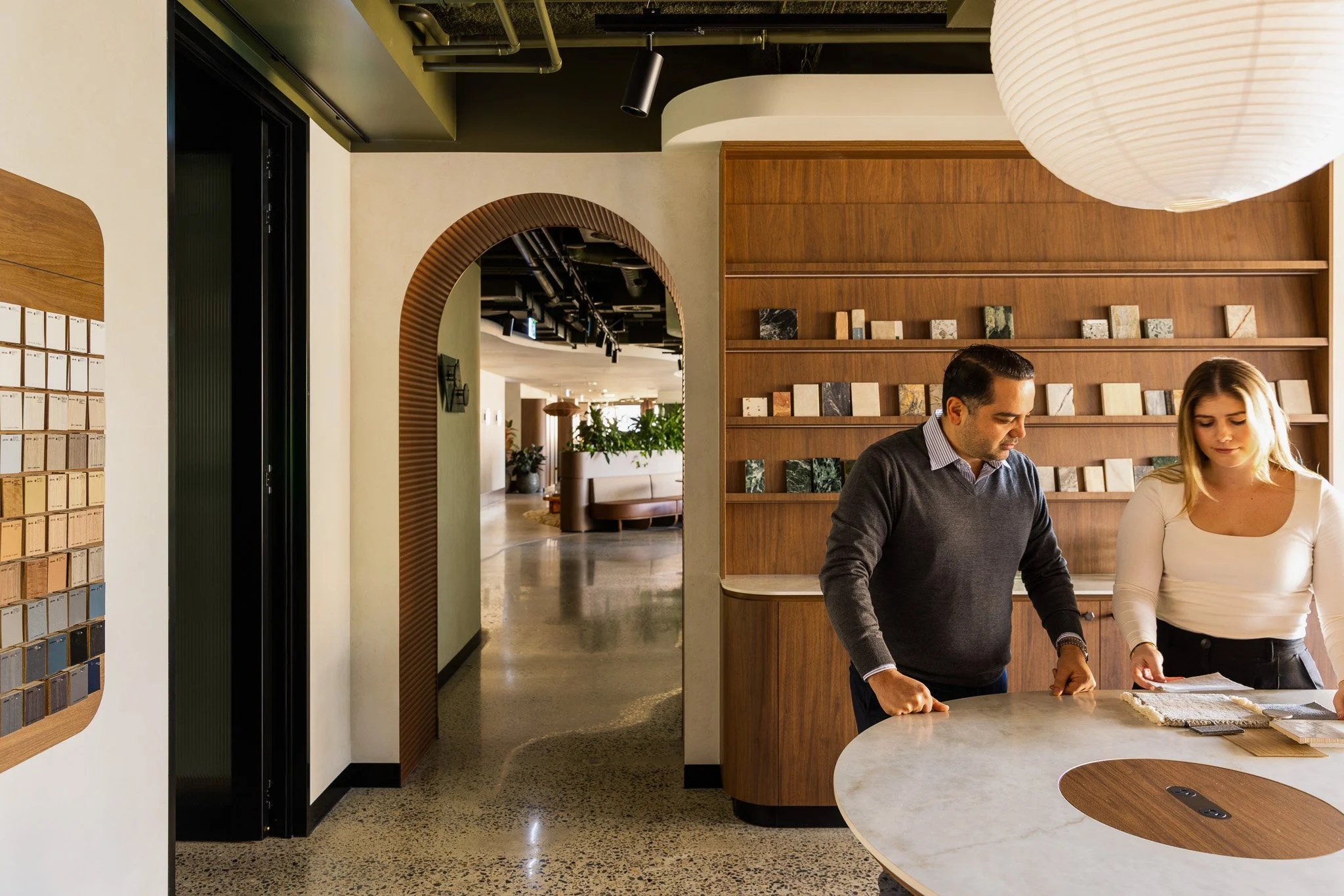The Brain on Space: Designing for Human Chemistry at Work
PART 1: The Prehistoric Brain in a Modern Office
Humans may think of themselves as modern, technologically advanced, and future focused. Yet our brains remain wired for survival in environments vastly different from today’s workplaces. They are still tuned to natural landscapes, social bonds, and wide-open spaces, not the glass towers, virtual meetings, and shared desks of the present. This matters deeply when we design places where people are meant to thrive, connect, and create.
Why It Matters
Workplace performance depends not only on tools or floorplans but also on the subconscious responses happening within the nervous system. It is driven by hardwired patterns in the brain, chemical reactions, instinctive behaviours, and subconscious cues. When physical environments match the brain’s core needs, people experience improved wellbeing, motivation, and connection. When they do not, the result is often disengagement and burnout.
Our Evolutionary Blueprint
For most human history, roughly 99%, humans lived as nomadic foragers, surviving through hunting and gathering:
Nomadic, constantly scanning for danger or opportunity.
Social, thriving in cooperative groups.
Territorial, requiring space for rest and safety.
These instincts remain visible today.
People still show:
A preference for positions that provide a clear view, such as choosing a desk with good sightlines.
Personalising a desk in a shared office.
Seeking quiet corners when overwhelmed.
Feeling uplifted by sunlight and greenery.
Your prehistoric brain is not outdated. It is doing its best to survive and thrive in environments it was not quite designed for.
Prospect and Refuge: A Hardwired Preference
As outlined in Jay Appleton’s Prospect Refuge Theory (1975) and expanded by biophilic design frameworks (Browning, Ryan, and Clancy, 2014), humans instinctively seek two environmental conditions:
Prospect: open views that allow scanning of surroundings, such as desks near windows or central hubs.
Refuge: safe, enclosed spaces for restoration, such as booths, pods, or corners.
We are drawn to these settings because they reflect conditions our brains are hardwired to trust. In modern workplaces, they promote sustained attention, psychological safety, and a sense of comfort.
From Caves to Cubicles: How Shelter Shaped Behaviour
The spaces we have inhabited tell the story of our psychological development. From early shelters to modern offices, changes in where and how we live have shaped human behaviour in profound ways:
Caves → Safety, group bonding, natural acoustics.
Tribal dwellings → Communal life, firelight, rituals.
Early architecture → Status, control of territory, hierarchy.
Factories and offices → Productivity driven layouts, minimal nature.
Modern workplaces → Rebalancing focus, flexibility, and human needs.
Each era added complexity, but the fundamental needs remained: safety, belonging, autonomy, and connection to nature.
These echo frameworks such as Maslow’s Hierarchy of Needs and Self Determination Theory
Contemporary Design, Timeless Responses
When we flood offices with natural light, biophilic design, and opportunities for movement, we are not just following trends. We are activating deep rooted brain systems that promote calm, clarity, and motivation.
When we ignore those needs, we ask a prehistoric brain to function in a synthetic, high stress world. That leads to decision fatigue, distraction, and disengagement.
Designing with the Prehistoric Brain in Mind
Good design does not fight evolution. It flows with it, working alongside the instincts and patterns that have shaped human behaviour for thousands of years.
By understanding where we came from, we gain powerful tools to create workplaces that feel intuitive, energising, and safe. Such spaces do more than meet functional needs, they support cognitive clarity, reduce stress, and encourage authentic social connection. In this way, design becomes not just about form or aesthetics but about aligning modern environments with the biological systems that allow people to flourish.
References
· Appleton, J (1975). The Experience of Landscape. London: Wi ley.
. Browning, W. D., Ryan, C. O., & Clancy, J. O. (2014). 14 Patterns of Biophilic Design: Improving Health and Well-Being in the Built Environment. New York: Terrapin Bright Green.
. Maslow, A. H. (1943). A theory of human motivation. Psychological Review, 50(4), 370 396.
. Ulrich, R. S. (1984). View through a window may influence recovery from surgery. Science, 224(4647), 420–421.





